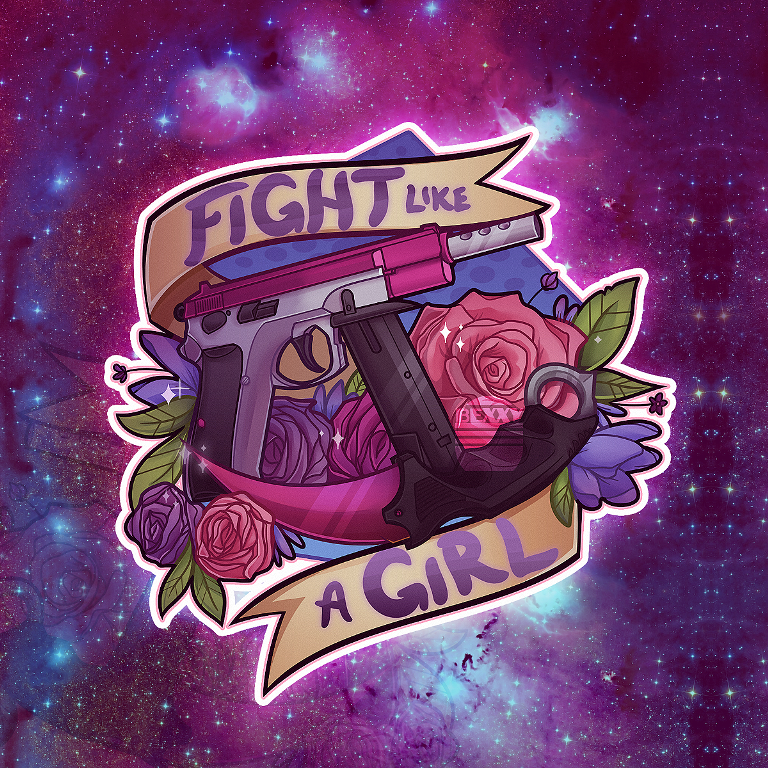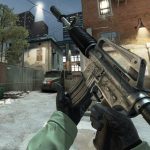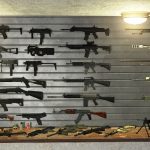
In the game Counter-Strike: Global Offensive (CS:GO), sticker capsules are a type of item that players can obtain. These capsules contain various stickers that players can apply to their weapons as a form of customization.
Each sticker capsule must be opened with a sticker capsule key, which can be purchased in the game’s store or on the Steam Marketplace. Once a capsule is opened, a player receives one random sticker from the set of possible stickers that the capsule can contain. The contents of a sticker capsule vary and can include a range of designs, some of which are more rare and sought-after than others.
Stickers can come in different rarities, similar to skins for weapons. Some stickers can also be holo or foil, which adds a shiny or reflective effect to the sticker.
Can the sticker be sold?

Stickers in CS:GO can be sold. Both unopened sticker capsules and individual stickers obtained from opened capsules can be traded with other players or sold on the Steam Marketplace.
The price a sticker can fetch on the marketplace varies widely and depends on several factors. Some of these factors include the rarity of the sticker, whether it’s a standard, holo, or foil type, and its popularity within the CS:GO community. For instance, stickers featuring popular teams or players, or those that were part of limited-time events, can often be sold for higher prices.
However, it’s important to note that once a sticker is applied to a weapon, it can’t be removed and sold separately. It becomes a part of the weapon skin, potentially increasing the skin’s value, but it can no longer be traded or sold on its own.
Remember to always exercise caution when buying or selling items in CS:GO or any other game. There can be scams or fraudulent activity, so it’s important to use trusted platforms like the Steam Marketplace for all transactions.
What is the value of the sticker and where is it profitable to sell it?
The value of a sticker in CS:GO can vary greatly depending on a number of factors.
These can include:
- Rarity: Some stickers are much rarer than others, making them more valuable to players.
- Demand: The popularity of the design or the professional player/team associated with the sticker can greatly affect its price. If a sticker is in high demand, its value will likely increase.
- Condition: Stickers can’t degrade like weapon skins can, but whether a sticker is unused or already applied to a weapon can make a difference in its value.
- Type: Regular stickers are the most common, but holo and foil stickers are shinier and more reflective, which can make them more desirable and, therefore, more valuable.
- Event/Release Time: Stickers that were released as part of limited-time events (like Major tournaments) or that are no longer available in the game can also be more valuable due to their exclusivity.
The most common and safe platform to sell stickers is the Steam Community Market, where you can list your stickers for sale at a price you choose. Note, however, that Steam takes a cut of each sale as a transaction fee.
Another option is third-party marketplaces that deal in CS:GO items. These sites can sometimes offer better prices or lower fees than the Steam Market, but they come with increased risk. Not all third-party sites are reputable, and scams are not uncommon. If you choose to use a third-party site, do your research and make sure it is a trusted and well-reviewed platform.
Remember that the value of virtual items like CS:GO stickers can be very volatile and unpredictable. Prices can fluctuate based on a variety of factors, including changes in the game itself, the performance and popularity of pro players and teams, and trends within the community. Be sure to research current market prices and trends before buying or selling a sticker.
Rarity
Rarity in CS:GO stickers, similar to weapon skins, refers to how common or uncommon a particular sticker is within the game.
The rarity of an item influences its value and desirability among the player base. In CS:GO, the rarity tiers are typically:
- Consumer Grade (White): The most common and least valuable tier.
- Industrial Grade (Light Blue): Slightly less common than Consumer Grade.
- Mil-Spec (Blue): A mid-range rarity.
- Restricted (Purple): Less common than Mil-Spec.
- Classified (Pink): Quite rare and often valuable.
- Covert (Red): Extremely rare and often very valuable.
- Gold (Gold): This rarity is often assigned to special items like knife skins and gloves, and possibly some event-specific stickers.
Please note that the application of this rarity system to stickers might differ slightly, and some stickers may not strictly adhere to this system, especially special event or tournament stickers.
Rarer stickers are typically more sought after and therefore more expensive. However, the price of a sticker doesn’t only depend on its rarity but also on other factors such as demand, the player or team it represents, the event it’s associated with, and the overall market conditions.
Demand
Demand, in the context of CS:GO stickers, refers to the level of player interest in a particular sticker.
The demand for a sticker is influenced by a variety of factors:
- Popularity of the Design: If a sticker has a design that many players find appealing, there will be high demand for that sticker. This could include stylish graphics, catchy phrases, or distinctive artwork.
- Association with Popular Teams/Players: Stickers associated with popular eSports teams or players often have high demand. Fans like to support their favorite teams or players by applying their stickers to their weapons.
- Rarity: Rare stickers are often in high demand simply because there are not many of them available.
- Event or Edition: Stickers associated with specific events, like Major Tournaments, or special editions, are often in high demand, especially if those events are popular or have a significant place in CS:GO history.
- Holo/Foil Variants: Holographic or foil stickers, which have a shiny, reflective effect, are often more in demand than their regular counterparts due to their distinctive look.
A sticker that’s in high demand will generally sell for a higher price on the Steam Marketplace or other trading platforms. However, high demand doesn’t always last forever. Changes in the CS:GO meta, the rise or fall of certain pro teams or players, and shifting player tastes can all impact the demand for a sticker over time.
Lastly, it’s also important to consider supply when looking at demand. Even if a sticker is in high demand, if there’s a large supply of that sticker available, the price might still remain relatively low. Conversely, if a sticker is rare (low supply) and in high demand, its price can be significantly higher.
Condition
In CS:GO, the term “condition” generally refers to the appearance of weapon skins and indicates how worn the skin looks. This could range from “Factory New” (the best condition, with no signs of wear) to “Battle-Scarred” (the worst condition, with significant wear and tear).
However, for stickers in CS:GO, the concept of condition doesn’t really apply in the same way. A sticker doesn’t have wear levels like weapon skins do. When you get a sticker, whether from a capsule or the marketplace, it’s always in a “new” state. Once a sticker is applied to a weapon, it cannot be removed or worn down over time.
So, when it comes to stickers, “condition” could refer to whether the sticker is unused (i.e., not yet applied to a weapon) or already applied. An unused sticker can be sold on its own, while a sticker that has been applied to a weapon becomes a part of that weapon skin and can only be sold or traded as a part of that skin.
The value of an unused sticker vs. a sticker applied to a weapon can vary greatly. Some weapons may increase in value when a popular or rare sticker is applied, while others might not see as much of a price increase. It all depends on the combination of the sticker and the weapon skin, as well as the tastes of the buyers in the marketplace.
Type
In CS:GO, stickers come in various types which essentially describe their visual effects.
The main types of stickers are:
- Standard: These are the basic stickers with a normal, non-reflective finish.
- Holo: Holographic stickers have a shiny, reflective surface that changes appearance when viewed from different angles, similar to holographic trading cards.
- Foil: Foil stickers are even shinier than holo stickers, with a metallic finish that really stands out.
Both holo and foil stickers are typically rarer and more valuable than standard stickers. They’re often sought after by players who want their weapons to have a flashy, distinctive appearance.
Note that the type of a sticker is separate from its rarity (e.g., common, rare), its association with a player or team, and the event it’s tied to (if any). All these factors can influence a sticker’s value and desirability in the marketplace.
Event/Release Time
In CS:GO, certain stickers are associated with special events or specific periods of time.
Here’s what you should know about this:
- Event Stickers: These are often tied to major eSports tournaments, like the CS:GO Major Championships. They can include team logos, player autographs, and other designs related to the event. Because they’re only available for a limited time, these stickers can become quite valuable, especially if the teams or players featured perform well or have a large fanbase. After the event, these stickers can no longer be obtained in the game (except by trading with other players or buying from the Steam Market), which can increase their rarity and value.
- Release Time: Sometimes, stickers are released as part of a special update or for a limited-time event. Once this period ends, the stickers can no longer be obtained in the game, increasing their rarity. Stickers from early in CS:GO’s history or from particularly well-received updates can become highly sought after.
- Seasonal/Holiday Stickers: CS:GO sometimes releases stickers for specific holidays or seasons, like Halloween or Christmas. Like event stickers, these are only available for a limited time.
These stickers can become valuable collector’s items, especially for fans of the teams, players, or events they represent. However, like all virtual items, their value can be volatile and unpredictable. Factors such as changes in the game’s meta, the rise or fall of pro teams or players, and trends within the CS:GO community can all influence the demand for and price of these stickers.


